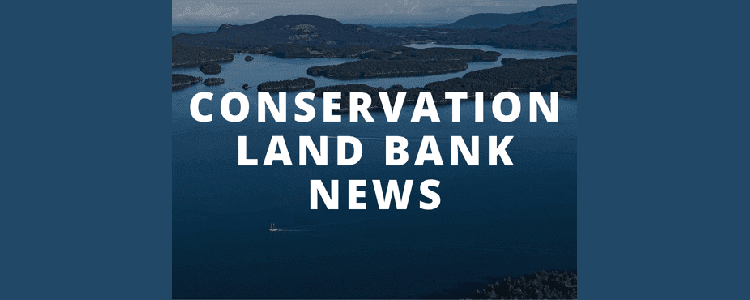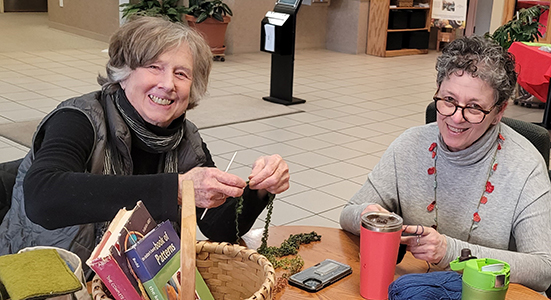||| BY MATTHEW GILBERT, theORCASONIAN OP-ED REPORTER |||
On February 19, the SJC Planning Commission finalized its “findings of fact” to support its recommendation that there be a countywide cap on vacation rentals of 650 for a period of five years. New permits would be issued by lottery, with the following (main island) allocation:
- Orcas Island – 334
- San Juan Island – 229
- Lopez Island – 85
(Vacation rentals are prohibited on Waldron Island and Shaw Island.)
Those findings will go to the County Council, which will decide the fate of that number – and whether it should be higher or abandoned altogether. For those (primarily members of the Vacation Rental Work Group) hoping that the final cap will somehow return to the original recommendation of 413, that needle isn’t moving.
The commission deliberated over a series of draft findings that have been made and revised over the last several months. Three in particular took up much of its time (italics added):
- A. San Juan County Code 18.04.275 regulates vacation rental of residences or accessory dwelling units (vacation rentals) but does not include regulations that address the impact of over-concentration of vacation rentals or the impacts of overtourism.
- F. “Overtourism can result in negative impacts including reducing the sense of community, damage to the environment, overload to infrastructure, and degraded tourist experience.
- G. The County Council is concerned that the over-concentration of vacation rentals within neighborhoods or islands will negatively impact the sense of community, the environment, overload the infrastructure (ferries) and degrade the tourist experience.
Common to each is the word “over.” Commissioner Steve Smith was especially insistent that references to “over-tourism” and “over-concentration” were “too subjective . . . We don’t have any studies to support that.” He also wanted the findings to be “as brief and simple as possible” so as not to risk possible legal exposure.
It didn’t matter that the original intent of the moratorium was in response to concerns about the impacts of over-tourism and an over-concentration of short-terms rentals in certain neighborhoods that didn’t emerge from someone’s imagination. [Or that the question itself of what is or isn’t “objective” and “subjective” is itself a subjective query.] In the end, the word was excised from all of the final “findings of fact,” along with the entirety of F. and G. above, as exhibited below:
- A. San Juan County Code 18.04.275 regulates vacation rental of residences or accessory dwelling units (vacation rentals) but does not include regulations that address the impact of over-concentration of vacation rentals or the impacts of over-tourism.
- B. Vacation rentals consist of transient occupants who are not resident in the community long enough to establish relationships capable of building community. OverConcentration of vacation rentals negatively impacts the sense of neighborhood or community as transient occupants begin to outnumber residents.
- C. Vacation rentals are the primary source of growth of transient accommodations in the County. Other sources of transient accommodations such as hotels, campgrounds and resorts are significantly limited by existing land use regulations.
- D. Growth of transient accommodations is likely to result in additional tourist visits to the islands, which may result in overtourism negative impacts if not properly regulated (“negative impacts” courtesy of new DCD Director David Williams).
- E. It is appropriate to evaluate the impact of vacation rentals on the environment, neighborhoods and the community.
- F. It is necessary to explore local regulations of vacation rentals to ensure that the County adequately addresses potential land use compatibility issues and adverse impacts to rural character, natural resources and the public welfare.
- G. Existing compliant vacation rental permits remain valid and are not affected by caps.
Again, important to Smith, and most others on the commission, was the lack of quantifiable data in establishing that something (in this case, tourism traffic and the number of vacation rentals) was “over” – in other words, too much. What quickly became clear in the meeting, however, was that little research had been done to validate – or invalidate – that claim.
The group could have started with the findings of the exhaustive SJC Visitor Study completed just a few years ago, which is as close to a verifiable body of local data one could find on these topics. Among many insightful observations, two stood out:
- 94% of residents feel that the county is at (52%) or over (42%) capacity during the peak summer season. Even local businesses were feeling the heat: at capacity (54%) and over-capacity (25%).
- Both residents (82%) and businesses (76%) agree that “Vacation rentals (VRs) have reduced housing affordability.”
Since that time, the challenges have only become worse as far as inadequate housing, labor shortages, ferry system gremlins, a proliferation of “unofficial” trails in Moran State Park, and so on, to name just a few. Early indications based on confirmed reservations suggest that this summer season will look a lot like last year’s.
There is also plenty of data from communities across the country showing that a rise in VRs increases tourist traffic – how could it not? Such studies have not been done specifically in this county, but where the Planning Commission admits that it’s “likely,” the data show it’s a reliable rule of thumb.
Why does this matter? In taking the position it did, the Planning Commission seemed to water down the original impetus for the moratorium cum cap, leaving the door open to a less strenuous number. The final findings in and of themselves aren’t inaccurate, but what makes one finding a “fact” and the other a “conjecture” that doesn’t make the cut?
As stated in previous articles, the issue of VRs and their impacts is a multifaceted one, and a one-size-fits-all cap is very limited in what it can actually accomplish. Hopefully, it sparks the beginning of a broader conversation about the various issues that have been raised by this process. There is no going back, but in looking ahead, it’s important that the assumptions we make when shaping a future that preserves community, protects the environment, and makes economic sense can be counted on to be rigorous.









I completely agree with Matthew:
“The group could have started with the findings of the exhaustive SJC Visitor Study completed just a few years ago, which is as close to a verifiable body of local data one could find on these topics. Among many insightful observations, two stood out:
94% of residents feel that the county is at (52%) or over (42%) capacity during the peak summer season. Even local businesses were feeling the heat: at capacity (54%) and over-capacity (25%).
Both residents (82%) and businesses (76%) agree that “Vacation rentals (VRs) have reduced housing affordability.”
Since that time, the challenges have only become worse as far as inadequate housing, labor shortages, ferry system gremlins, a proliferation of “unofficial” trails in Moran State Park, and so on, to name just a few. Early indications based on confirmed reservations suggest that this summer season will look a lot like last year’s.
There is also plenty of data from communities across the country showing that a rise in VRs increases tourist traffic – how could it not? Such studies have not been done specifically in this county, but where the Planning Commission admits that it’s “likely,” the data show it’s a reliable rule of thumb.
Why does this matter? In taking the position it did, the Planning Commission seemed to water down the original impetus for the moratorium cum cap, leaving the door open to a less strenuous number. The final findings in and of themselves aren’t inaccurate, but what makes one finding a “fact” and the other a “conjecture” that doesn’t make the cut?”
A few thoughts.
The Planning Commission has struggled for years to obtain usable data from the planning staff. It was not forthcoming. It is difficult to impose restrictions on land use without real data. Courts prefer data.
As for the notion that the SJC Visitor Study constitutes data, I don’t think so. It records people’s feelings. I, too, feel that there are too many tourists in high season. Fact is that we can do little to STOP tourists coming other than stopping advertising and promotion.
As for the “feeling” that VRs take affordable housing stock away, I still don’t buy it. And there IS data regarding that proposition–the costs of land and construction mean that few of these VRs would ever be available to rent in affordable long-term rentals.
None of which provides any solutions. We keep going in circles.
This is a very insightful summary. The “moratorium” we currently have is not worthy of the name, as a couple months after it was imposed, two of the three county councilors (from San Juan and Lopez) voted to eliminate it in rural farm forest and rural residential, leading to more than 50 new permits. I asked those two councilors the reason for that change, but they have never answered me.
The numbers Matthew cited above bear repeating:
94% of residents feel that the county is at (52%) or over (42%) capacity during the peak summer season. Even local businesses were feeling the heat: at capacity (54%) and over-capacity (25%).
Both residents (82%) and businesses (76%) agree that “Vacation rentals (VRs) have reduced housing affordability.”
This whole topic arose several years ago because of the impact of vacation rentals on local residents, and the number of vacation rentals has only increased since then. What is the end game of Steve Smith and the other commission members who support unrestricted proliferation of vacation rentals?
How about a yurt village with central shower/bath?
Mount Baker Farm? Who owns that now?
What Peg said, “Fact is that we can do little to STOP tourists coming other than stopping advertising and promotion.” is the subject of some Zoom meetings the SJI Visitors Bureau is conducting on each island. They want people to hear about what they are doing…and want feedback on promotion of the islands.
The first Zoom meeting was for San Juan Island and had VERY low attendance. If you are interested in how our islands are promoted please attend the Orcas meeting next Tues. 3/1 at 5:30p. You need to register and the link is: https://us02web.zoom.us/meeting/register/tZYrce-srzgqGtR4OZbuZka0GoCOyX_E2-2c
The SJC Visitor Study does provide a good ‘exhibit’ for the findings. One conclusion, overlooked here, is that tourism and summer population in the islands is not limited by ferry service (which is, believe it or not, below capacity) but by available accommodations, i.e. vacation rentals. A cap on existing numbers, active or not, however, just begins to address the problem. There are basic questions of equity: should caps apply county-wide or only to UGAs?; should VRs be regulated as residential permits or as businesses (like hotels and B&Bs)?; should permits be issued only to local residents or to any non-resident owner or corporate entity?; should permits run with the property, and therefore add to its resale value, or should they be specific to the property owner?; and how many VR permits should one “owner” be allowed. These and other questions need to be resolved in order to have an equitable outcome for local owners and neighborhood residents.
It seems like the above article “Buried The Lead” (I know, “Lede”)
This:
“(Vacation rentals are prohibited on Waldron Island and Shaw Island.)”
I want to know how this prohibition works. It may be the key to controlling the out-of-control vacation rental complex which is now ruining this county.
Matthew and Lin, When will you finally realize that vacation rentals have very little to do with over-tourism or lack of affordable housing? If vacation rentals are limited, more hotels will be built like the new one on Main Street. And million dollar houses don’t qualify as affordable housing.